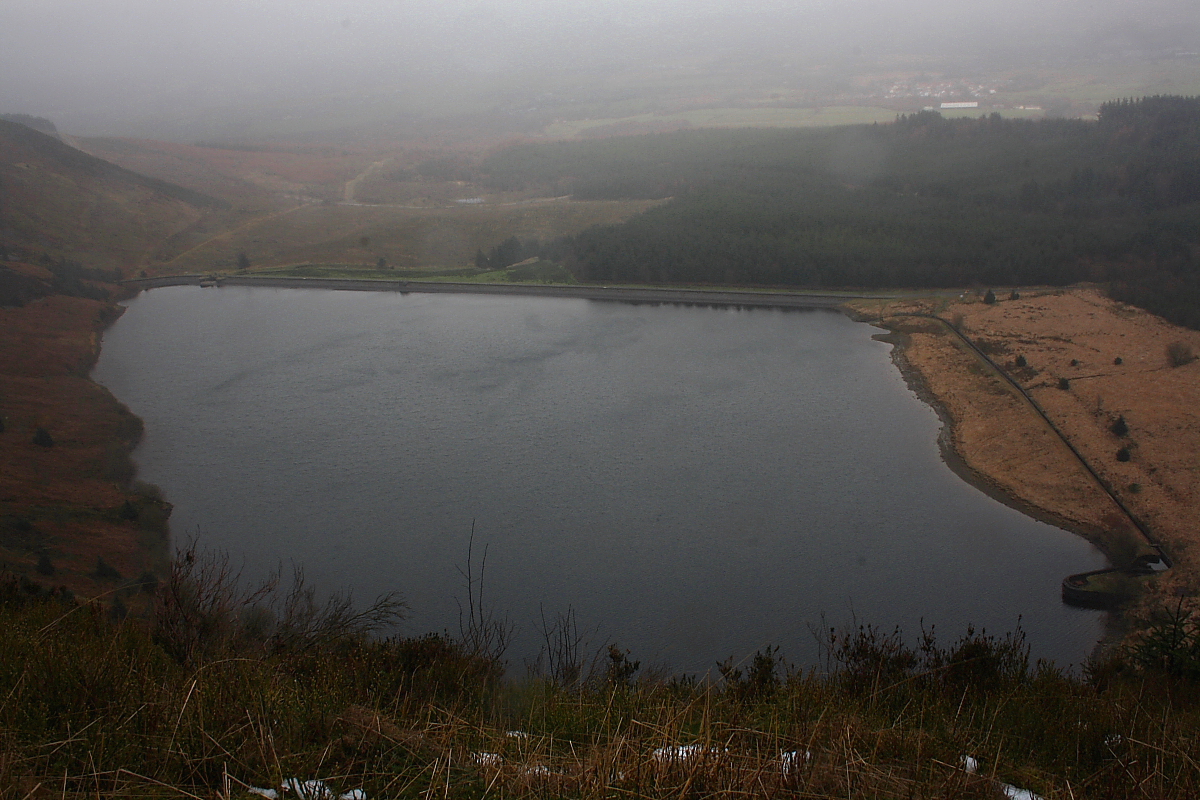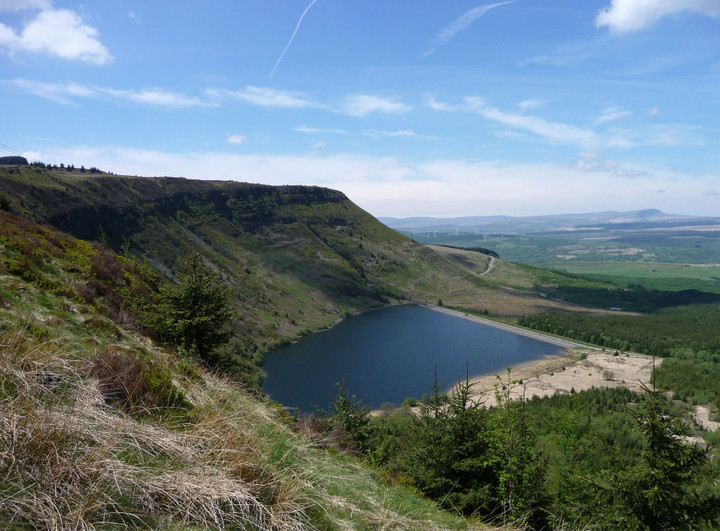
Although enlarged to function as a reservoir nowadays, it’s still easy to see why the Llyn Fawr held the interest of our forebears. Mind you, any lady in this lake would’ve needed full wetsuit to survive when the Mam C and I passed by...

Although enlarged to function as a reservoir nowadays, it’s still easy to see why the Llyn Fawr held the interest of our forebears. Mind you, any lady in this lake would’ve needed full wetsuit to survive when the Mam C and I passed by...

Llyn Fawr.

The smaller companion, Llyn Fach.

Looking NE towards the Brecon Beacons.

Llyn Fawr from the cliffs of Craig y Llyn. The whole of the Fforest Fawr range (many with Bronze Age summit cairns) and the unmistakable twin peaks of Corn Du and Pen y Fan provide the wonderful backdrop.

It’s a reservoir now, mainly frequented by local fishermen.... but Llyn Fawr didn’t always host such mundane activities. Oh, no.

Llyn Fach sits the other side of Craig y Llyn from its larger companion to the east.... bearing in mind the sacred nature of the latter, what odds Llyn Fach was also viewed as ‘special’ back then – I assume it has been investigated, too? The point is arguably given additional credence by the series of cairns which crown the escarpment. The viewpoint is to the approx north-west of one of these cairns, Carn Fach. Industrial Cwm Nedd can be seen beyond.

To think what came out of there....

Some of Britain’s finest Iron Age treasures were recovered from the Llyn Fawr’s waters......

Looking back from Craig-y-Llyn.....

Visited 8.8.13
Great views of Llyn Fawr can be had from the Craig-Y-Llyn car park viewing point on the A4061.
There is an information board, picnic tables and if you are lucky, a burger/ice cream van!
If you also want to see Llyn Fach you will need to follow the ‘path’ west into the forestry – which also gives great views of Llyn Fawr.
The A4061 climbing out of The Rhondda Valley passes above a dark and mysterious lake, cradled beneath the – more often than not – glowering escarpment of Craig-y-Llyn rising to not far short of 2000ft.
Fisherman are now usually seen lining its shoreline, but this lake once held a far greater significance to locals than merely a good spot to spend an afternoon away from the wife and kids.....for it was in its murky depths that the famous Llyn Fawr hoard was discovered between 1911 and 1913 during the construction of a reservoir.
These objects, clearly votive offerings – unless you accept that they were put in here for ‘safe keeping’ (Doh!), or, er....sort of ‘lost’ – date from the late Bronze and early Iron Ages, a Hallstatt sword in particular being tentatively dated to c650 BCE, which would make it the earliest iron object discovered to date in South Wales. Probably all of Wales, as it happens.
One wonders how many of the tradesmen and weekend punters who park to have their sandwiches overlooking Llyn Fawr have any idea of what once took place below them? I’d recommend a walk along the escarpment edge of Craig-y-Llyn to gaze down into the waters and contemplate if this is where Malory etc got the idea for Excalibur and the ‘lady in the lake’.
There’s even another little lake – Llyn Fach (of course) around the corner........
Craig y Llyn towers above the lake, and it..
..had a green lady in the seventeenth century. Every seven years she came and sat on one of the rocks, making chains and necklaces of wild berries. The rowan or mountain-ash was her favourite tree, and she could be seen wandering about gathering an apronful of the bright red berries, which she conveyed to her favourite rock. Once when a man wished to follow her, but stood irresolute, she beckoned to him and smiled. He went towards her, and she gave him a handful of red rowan-berries.
He thanked her, and put them in his pocket. Then there came a crash, and the lady disappeared. She wore a green robe and green jewels. The berries changed to gold coins.
From chapter 15 of Mary Trevelyan’s ‘Folk lore and folk stories of Wales’ (1909). Online at V-Wales:
vwales.co.uk/Folklore/trevelyan/welshfolklore/chapt15.htm
Some basic information regarding the wondrous finds found here upon a local website...
A nice snowy picture of Craig y Llyn and Llyn Fawr.
also see gtj.org.uk/en/small/item/GTJ31687/
These links show a cauldron and some ‘horse gear’ deposited in Llyn Fawr c800-600BC. The artefacts were discovered when the lake was drained during the process of turning it into an unromantic reservoir, in 1911. The finds include some of the earliest British items made of iron.












































































































































